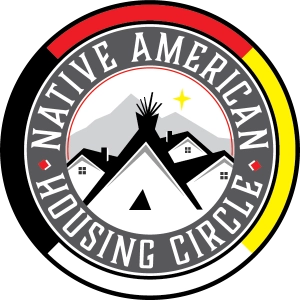Source: https://file.lacounty.gov/SDSInter/bos/supdocs/141088.pdf
MOTION BY SUPERVISORS JANICE HAHN AND HILDA L. SOLIS, October 15, 2019
To this point, community members described multiple scenarios in which AIAN could ultimately have their own dedicated housing.
Los Angeles County (County) is home to the largest population of American Indians and Alaska Natives (AIAN) in the United States. Due to a legacy of systemic racism and genocide, AIAN endure disproportionate symptoms of intergenerational trauma (e.g. mental health, chronic disease, substance use, and economic disparities). While these disparities put AIAN at greater risk for homelessness, tracking the specific statistics associated with these disparities represents a great challenge.
There is a disconnect between formal data and community knowledge about AIAN homelessness. In the County, AIAN in are 3.4 times more likely than non-Hispanic Whites (NHW) to live in households with an income below the federal poverty level and are 3 times more likely to experience suicidal ideation than the overall population of Los Angeles County The diabetes mortality rate for AIAN is more than twice that of all other races, and alcohol and pain reliever abuse or dependence is also twice as high nationally for urban AIAN compared to NHW. These disproportionate risk factors are not necessarily reflected in the 2019 Greater Los Angeles Homeless Count. The Count identified an increase of AIAN homelessness by 68% from 2018 to 2019. This is in contrast to the Healthy LA Natives study in which 14% of AIAN survey respondents identified as homeless, and 20% of AIAN respondents identified as temporarily homeless. The discrepancy may be partially explained by the fact that the Los Angeles Homeless
Services Authority (LAHSA) reports data unless otherwise requested using the United States Department of Housing and Urban Development (HUD) definition of “American Indian and Alaska Native alone.” This is inconsistent with the definition widely accepted and endorsed by entities such as the Urban Indian Health Institute which uses “AIAN alone or in combination with other races” and AIAN who also identify as Hispanic.
The Los Angeles City/County Native American Indian Commission (LANAIC), in partnership with several community-based and local government organizations, released a preliminary report detailing the findings from the “Community Forum on Native American Homelessness” held in September 2018. The forum, along with subsequent focus groups and key informant interviews revealed some common themes. On an individual level,
AIAN who were homeless identified stories of trauma, misfortune, and resilience. To this point, community members described multiple scenarios in which AIAN could ultimately have their own dedicated housing.
There are existing best practices in housing urban AIAN communities and working with the local Continuums of Care in cities such as Seattle, Phoenix, and Minneapolis. There is also a set of comprehensive recommendations centering racial equity that were recently put forth by the Ad Hoc Committee on Black People Experiencing Homelessness.
Meanwhile, LANAIC, LAHSA, the Department of Mental Health (DMH), and the United American Indian Involvement jointly applied for HUD technical assistance in addressing homelessness on and off tribal lands. Though the technical assistance was not awarded, the need remains and we should to take a deeper dive into exploring AIAN homelessness using a racial equity lens, and centering AIAN voices.
WE, THEREFORE MOVE that the Board of Supervisors direct the Chief Executive Office -Homeless Initiative (HI) to collaborate with the Los Angeles Homeless Services Authority (LAHSA), Department of Mental Health (DMH), the Department of Health Services (DHS), the Department of Public Social Services (DPSS), the Probation Department, Office of Diversion and Re-entry, the Department of Children and Family Services (DCFS), the Los Angeles County Office of Education (LACOE), Title VI, K-12 and higher education institutions, and in consultation with the Los Angeles City/County
Native American Indian Commission (LANAIC) to develop and submit to the Board a written action plan in 180 days on the following:
- A detailed assessment of American Indians and Alaska Natives (AIAN)
homelessness including information from, but not limited to, the Greater Los
Angeles Homelessness Count and the Coordinated Entry System, using the
following definitions for AIAN: “American Indian and Alaska Native alone,”
“American Indian and Alaska Native alone or in combination with other races,”
and “American Indian and Alaska Native who also identify as Hispanic,” and
including tribal affiliation where available; - A report of baseline counts and demographic characteristics (including
homelessness status and risk factors for homelessness, when available) of the
AIAN population served by DMH, DHS, DPSS, the Probation Department, Office
of Diversion and Re-entry, DCFS, LACOE, and in consultation with K-12 and
higher education institutions using the definitions outlined above; - Recommendations for how to better capture AIAN homeless individuals in
homelessness data moving forward; - A strategy for improving the availability of AIAN culturally inclusive services
which addresses:
a. Existing gaps and opportunities in current homelessness resources
associated with AIAN at risk of homelessness or who are currently
homeless;
b. Which best practices in housing AIAN in other Continuum of Cares (CoC)
can be implemented within the LAC CoC;
c. Which best practices currently utilized in the County among other diverse
populations (women, older population, LGBTQ, lessons from the Ad Hoc
Committee on Black People Experiencing Homelessness) can be
implemented and culturally adapted for AIAN;
d. How to identify funding sources for technical assistance and further
trainings through the HUD Office of Native American Programs and other
relevant organizations; and - An assessment of available property that can be used for potential permanent supportive housing or affordable housing that is culturally inclusive particularly for AIAN.
